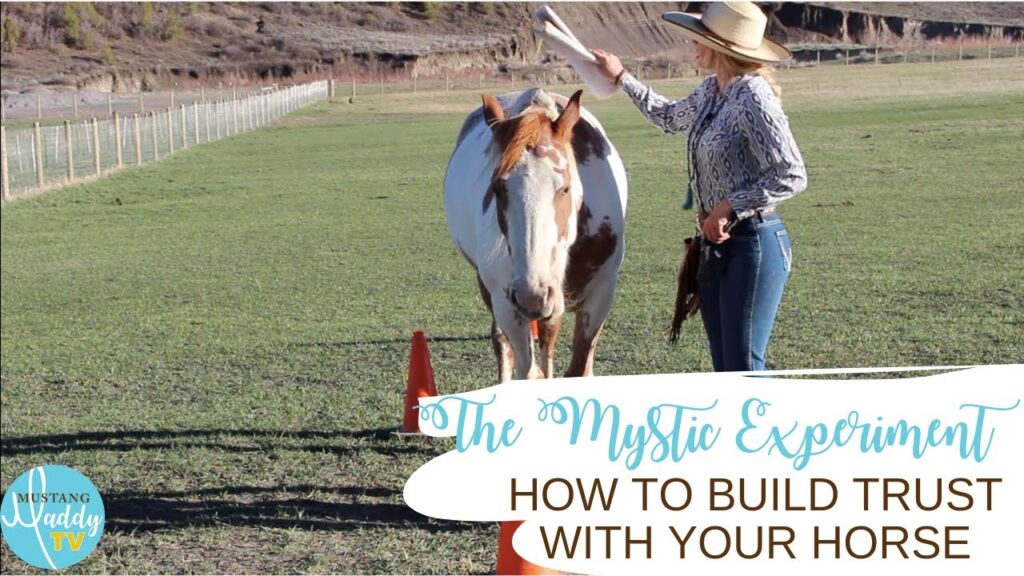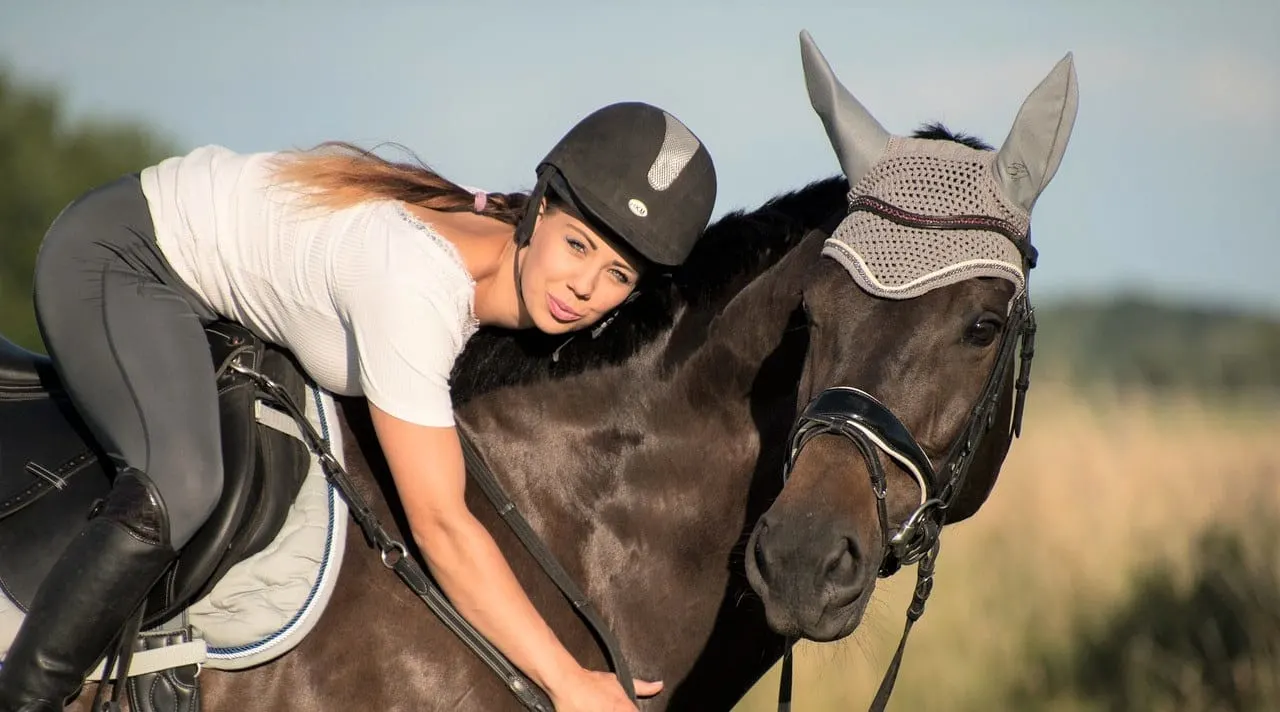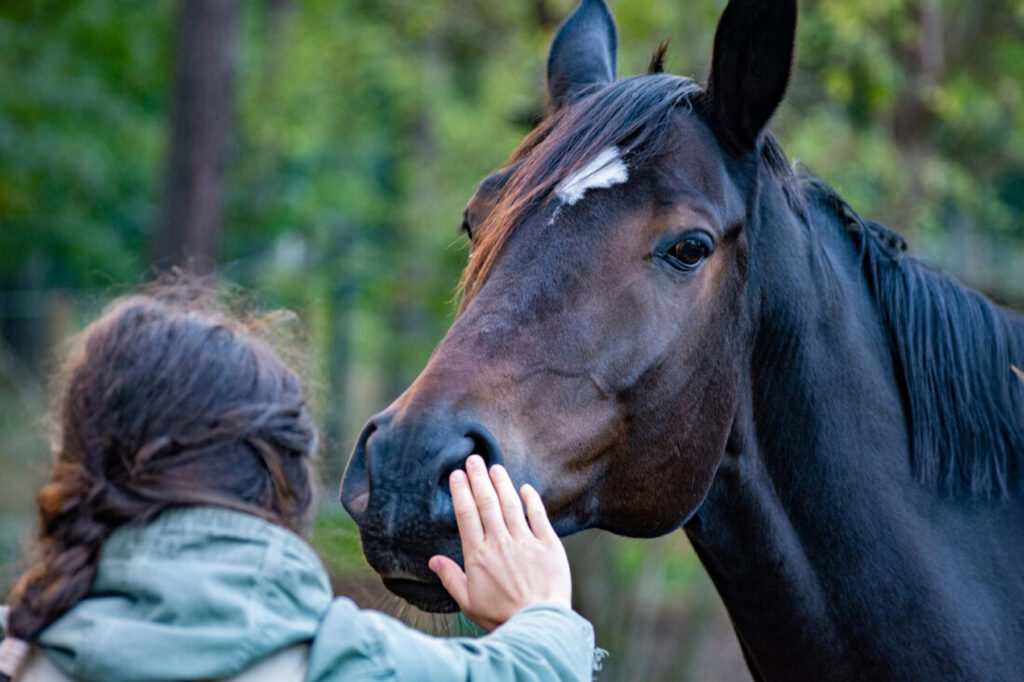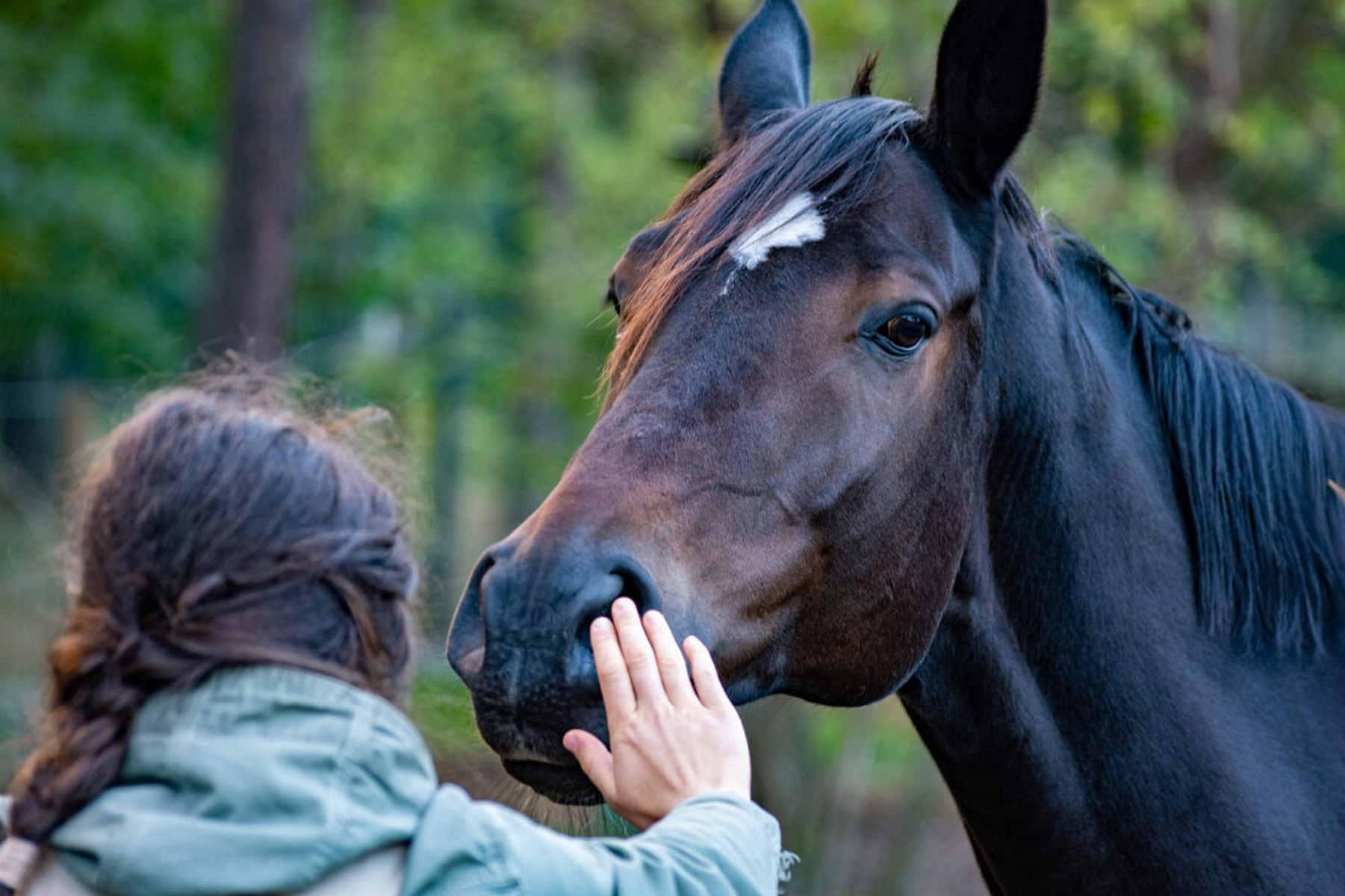In “The Art of Building Trust with Your Horse,” this article explores the importance of establishing trust between horse and rider. Whether you’re a seasoned equestrian or a beginner, building a strong bond with your horse is crucial for a successful and enjoyable partnership. By understanding the psychology of horses and utilizing specific training techniques, you can develop trust, respect, and communication with your equine companion. This article will provide valuable insights and tips on how to cultivate trust with your horse, ultimately enhancing your riding experience.
Understanding the Importance of Trust in Horseback Riding
As a horseback rider, you know that trust is the key to a successful and fulfilling partnership with your horse. Trust forms the foundation of your relationship and affects every aspect of your riding experience. It is the thread that connects you and your horse, and without it, communication, performance, and overall enjoyment can suffer. In this article, we will explore the integral role of trust in horseback riding and delve into various ways to build, maintain, and deepen this essential bond.
Establishing a Foundation of Trust
Before you can begin building trust with your horse, it’s important to establish a solid foundation. This starts with understanding your horse’s nature, instincts, and individual personality. Horses are highly perceptive animals and can sense your emotions and intentions, so it’s crucial to approach them with respect, patience, and consistency. By demonstrating leadership and gaining your horse’s trust on the ground, you lay the groundwork for a successful riding partnership.
The Connection Between Trust and Communication
Communication is the key to any successful relationship, and the same holds true for horseback riding. Trust lays the groundwork for effective communication between you and your horse. When your horse trusts you, they are more likely to listen to your cues and respond appropriately. In turn, your ability to communicate clearly and effectively enhances the trust between you and your horse. It is a continuous feedback loop where trust and communication reinforce one another.
How Trust Impacts Performance
Trust is not only essential for developing a meaningful connection with your horse but also for achieving optimal performance. When your horse trusts you, they are more likely to give their best effort, respond to your aids, and willingly tackle new challenges. Trust allows you to push boundaries and strive for excellence in your riding. It creates a harmonious partnership where both you and your horse feel confident, safe, and motivated to excel in your endeavors.
Building Trust through Groundwork
Introduction to Groundwork
Groundwork serves as the basis for trust building and lays the foundation for a successful partnership with your horse. It involves a series of exercises and interactions between you and your horse on the ground, allowing you to establish leadership, respect, and trust. Through groundwork, you can gain your horse’s trust, reinforce boundaries, and improve your communication skills.
Essential Groundwork Exercises
Numerous groundwork exercises can solidify the bond of trust between you and your horse. Some essential exercises include leading exercises, yielding hindquarters and forequarters, desensitization to various stimuli, and establishing body language cues. These exercises help establish clear communication, build respect, and develop a deep level of understanding and trust between you and your horse.
Using Groundwork to Establish Boundaries
Groundwork provides a valuable opportunity to establish boundaries and set expectations for your horse’s behavior. By consistently reinforcing these boundaries during groundwork sessions, you teach your horse to respect your personal space, respond to your cues, and trust in your leadership. Boundaries are essential to ensure safety, build trust, and create a cooperative partnership.
Developing Trust through Groundwork Activities
Engaging your horse in various groundwork activities can significantly enhance trust and deepen your rapport. Activities such as obstacle courses, liberty work, and longeing exercises not only provide mental and physical stimulation but also foster trust, confidence, and willingness in your horse. By challenging your horse in a controlled and supportive environment, you build trust and nurture a resilient and adaptable equine partner.

Developing Trust through Consistency and Predictability
Importance of Consistency in Horse Training
Consistency is a fundamental pillar in building trust with your horse. Horses thrive on routine and predictability, and when you consistently communicate and interact with your horse in the same manner, trust grows. Consistency in your training approach helps your horse understand and anticipate your expectations, creating a sense of security and trust in their environment.
Establishing a Routine
Establishing a consistent routine in your horse’s daily life can significantly contribute to trust building. Consistency in feeding times, turnout schedules, grooming rituals, and training sessions provides a predictable environment that fosters trust and stability. Horses feel more secure and develop trust when their daily routines remain relatively constant, allowing them to understand and feel comfortable in their surroundings.
Creating Predictable Environments
In addition to a consistent routine, creating predictable environments further strengthens trust. Horses are sensitive animals, and sudden changes in their surroundings can unsettle them. By providing a familiar and predictable environment, you help your horse feel secure, relaxed, and more willing to trust you as their rider. Consistency in your riding locations, arena setups, and trail experiences helps your horse develop confidence and trust in their surroundings.
Building Trust through Reliable Responses
Reliability and predictability in your responses to your horse’s cues and signals are vital for trust building. When your horse consistently receives an appropriate and timely response from you, they learn to trust your guidance and feel more secure in their actions. By being reliable and consistent in your riding aids, you create a harmonious partnership based on trust, where your horse feels confident in your ability to understand and support them.
Building Trust during Grooming and Care
Understanding the Bond during Grooming
Grooming provides an invaluable opportunity to strengthen the bond of trust between you and your horse. The physical touch, attention, and care you give during grooming sessions create a sense of comfort, relaxation, and bonding. Take the time to groom your horse thoroughly, paying attention to their reactions and providing positive reinforcement through gentle strokes and soothing words.
Creating a Positive Association with Care
By ensuring that your horse has positive experiences during grooming and care, you create a strong association between your presence and a sense of relaxation and pleasure. Approach grooming sessions with a calm and patient demeanor, addressing any fears or sensitivities your horse may have. Through consistent positive experiences, you build trust and develop a horse that willingly engages in grooming rituals.
Developing Trust through Handling and Veterinary Care
Handling your horse with patience, gentleness, and respect during veterinary care is essential for trust building. By working closely with your veterinarian to ensure a stress-free and positive experience, you reinforce your horse’s trust in you as their caretaker. When your horse feels safe and supported during medical procedures, vaccinations, and routine check-ups, trust is further solidified.
The Role of Trust in Hoof Care
Hoof care is a fundamental aspect of horse ownership, and building trust in this area is crucial. By regularly tending to your horse’s hooves, addressing any discomfort or issues promptly, and providing positive reinforcement, you create a foundation of trust. When your horse trusts you to handle their hooves and strives to cooperate during hoof care, overall wellness and trust are enhanced.
The Power of Positive Reinforcement in Trust Building
Introduction to Positive Reinforcement
Positive reinforcement is a powerful tool in trust building. It involves rewarding your horse for desired behaviors, reinforcing their understanding of cues and responses, and strengthening the trust between you. By using treats, praise, and other rewards in a timely and consistent manner, you communicate to your horse that their efforts are valued and appreciated.
Rewarding Desired Behaviors
When working with your horse, it is essential to focus on rewarding desired behaviors rather than solely correcting or punishing undesired ones. By promptly and effectively rewarding your horse for responding to your cues, showing willingness, and exhibiting trust, you foster a positive and trusting environment. This approach encourages your horse to seek your guidance, engage in the learning process, and solidify the bond of trust.
Using Clicker Training to Build Trust
Clicker training is a popular positive reinforcement method that can accelerate trust building. By using a clicker as a conditioned reinforcer and pairing it with rewards, you establish a clear and consistent communication system with your horse. Clicker training allows for precise timing and helps your horse understand the desired behavior quickly, resulting in increased trust and a deeper connection.
Balancing Positive Reinforcement with Clear Communication
While positive reinforcement is a valuable trust-building tool, it is vital to balance it with clear and consistent communication. Effective communication ensures that your horse understands your cues and expectations, leading to a deeper connection and trust. By combining positive reinforcement with clear and timely aids, you provide your horse with a solid foundation for learning, trust, and overall success.
Trust Building through Riding Techniques
Establishing Trust in the Saddle
Establishing trust in the saddle is crucial for a safe and productive riding experience. Begin by building trust on the ground and gradually transition to riding. Start with simple exercises and clear communication, ensuring that your horse feels secure and confident with your cues. Gradually progress to more advanced maneuvers and challenges while maintaining trust and understanding.
Building Confidence through Progressive Riding
Progressive riding helps build trust by gradually challenging your horse’s comfort zone and expanding their confidence. Start with basic exercises, such as walking, halting, and steering, and gradually introduce new elements, like transitions, lateral movements, and small jumps. By progressing at a pace that your horse can handle and providing consistent support, you nurture trust and foster a confident and capable equine partner.
Using Trust as a Foundation for Advanced Maneuvers
Trust is particularly crucial when working on advanced riding maneuvers. By advancing your horse’s training systematically and ensuring a strong foundation of trust, you create a partnership that can tackle complex movements with confidence. Whether it’s dressage movements, jumping technical courses, or navigating challenging trail obstacles, trust allows you and your horse to work together harmoniously and achieve impressive goals.
Developing Trust in Different Riding Disciplines
Trust is relevant in all riding disciplines, whether it’s dressage, show jumping, eventing, or trail riding. Each discipline requires a unique set of skills and challenges, but the underlying need for trust remains consistent. By developing trust through consistent training, clear communication, and positive reinforcement, you create a bond that transcends disciplines and allows you and your horse to excel in any riding environment.

Developing Trust with Personal Connection and Bonding
The Role of Connection in Trust Building
Trust goes beyond physical exercises and training methods – it is also rooted in the personal connection and bond between you and your horse. By nurturing a deep level of connection, you establish a relationship built on mutual respect, understanding, and trust. Take the time to connect with your horse on an emotional level, observe their body language, and respond to their needs with empathy and care.
Developing a Bond through Quality Time
Spending quality time together plays a vital role in trust building. Engage in activities that foster bonding, such as hand-grazing, trail riding, or simply enjoying each other’s company in the pasture. By investing time and effort into developing a bond, you create a relationship that is built on trust, shared experiences, and mutual enjoyment.
Understanding and Respecting Individual Personalities
Just like humans, horses have unique personalities that influence their trust-building process. Some horses may be more cautious, while others may be naturally outgoing. It is important to understand and respect your horse’s individual personality, adapting your training approaches and methods accordingly. By acknowledging and embracing these individual differences, you create an environment that encourages trust and promotes personal growth.
Building Trust through Mutual Respect and Understanding
Trust is a two-way street, and it requires mutual respect and understanding between you and your horse. Treat your horse with kindness, empathy, and patience, and strive to comprehend their perspective. By truly listening and responding to your horse’s needs, you establish a relationship founded on trust, cooperation, and shared understanding.
Overcoming Trust Issues and Rebuilding Trust
Identifying Trust Issues
Trust issues can arise for various reasons, such as past trauma, inconsistent handling, or negative experiences. It is crucial to identify and address these trust issues to foster a healthy and productive partnership with your horse. Common signs of trust issues include resistance, anxiety, evasive behavior, and tension. By recognizing these signs, you can take appropriate steps to rebuild trust.
Understanding the Causes of Distrust
To effectively address trust issues, it is important to understand the underlying causes of distrust. Past trauma, improper training techniques, or inconsistent handling can all contribute to a compromised trust bond. Identifying the root cause allows you to tailor your approach to rebuild trust and create positive associations.
Techniques for Rebuilding Trust
Rebuilding trust requires time, patience, and a strategic approach. Start by revisiting groundwork exercises to establish a solid foundation of trust and communication. Slowly reintroduce riding exercises while focusing on clear and consistent aids. Incorporate positive reinforcement and reward your horse for every small step towards trust and cooperation. Seek professional guidance if needed to ensure a safe and effective rebuilding process.
Seeking Professional Guidance for Severe Trust Issues
In cases of severe trust issues, seeking professional guidance is essential. An experienced trainer or equine behaviorist can provide expertise and guidance tailored to your specific situation. They can assess the underlying causes of distrust, provide effective methods for rebuilding trust, and help you navigate through any challenges that arise. With the support of a professional, you can address trust issues and foster a strong and resilient bond with your horse.

Trust as a Two-Way Street: Building Trust with the Rider
The Importance of Trust between Horse and Rider
While building trust with your horse is fundamental, it is equally important to establish trust as a rider. Just as your horse relies on you for consistency, clear communication, and reliability, you must trust in your horse’s abilities and responses. Trust between horse and rider creates a symbiotic relationship where both parties feel safe, supported, and motivated to excel.
Gaining the Trust of Your Horse
To gain the trust of your horse, demonstrate consistent and clear leadership. Be supportive, responsive, and reliable in your actions and communication. Build trust through groundwork, consistent training, and positive reinforcement. By showing trust in your horse’s abilities and providing them with a secure riding experience, you foster their trust in return.
Understanding and Meeting the Needs of Your Horse
Understanding and meeting your horse’s needs is essential in building trust as a rider. Consider their physical and emotional well-being, adjusting your training and riding practices accordingly. Ensure your horse is comfortable, addressing any saddle fit or physical issues promptly. By attending to your horse’s needs and prioritizing their welfare, you create a foundation of trust and partnership.
Building Trust through Effective Riding
Effective riding is a culmination of trust, skill, and clear communication. Focus on developing your riding abilities, refining your aids, and becoming a balanced and supportive rider. As you build trust with your horse, you can experiment with different riding techniques, exercises, and challenges. By consistently providing clear and fair cues, you establish trust in your abilities as a rider and create a harmonious partnership.
Maintaining Trust and Deepening the Relationship
Continuously Strengthening the Trust-Building Process
Trust is not a one-time achievement but an ongoing process that requires continuous attention and effort. Maintain the trust you have built with your horse by consistently reinforcing boundaries, providing clear and consistent communication, and nurturing your bond through regular quality time. Trust deepens over time, so make an ongoing commitment to reinforce and strengthen it.
The Role of Patience and Understanding
Patience and understanding are crucial elements in maintaining trust and deepening your relationship with your horse. Horses, like humans, have good days and bad days. It’s important to recognize their limitations, respect their emotions, and approach each day with empathy and understanding. By patiently working through challenges and setbacks, trust grows, and your connection deepens.
Building Trust through Ongoing Training and Bonding
The trust-building journey does not end once initial trust is established. Ongoing training and bonding activities are essential to maintain and reinforce trust. Continue to engage in groundwork exercises, ride consistently, and pursue activities that enhance your connection. By investing time, effort, and energy into your horse’s training and care, you strengthen the bond of trust and enhance your overall riding experience.
Celebrating Milestones in Trust Building
Recognize and celebrate the milestones achieved in your trust-building journey. Whether it’s overcoming a challenging obstacle, achieving a personal riding goal, or simply witnessing the growth in your horse’s confidence and trust, take the time to acknowledge and celebrate these achievements. Celebrations create positive associations and foster a sense of joy and accomplishment, further strengthening the bond of trust between you and your horse.
In conclusion, trust is the cornerstone of a successful partnership between a rider and their horse. It influences every aspect of horseback riding, from communication and performance to overall enjoyment. Building trust requires patience, consistency, clear communication, and a deep level of understanding. By investing time, effort, and care into trust building, you lay the foundation for a lifelong partnership filled with trust, respect, and shared accomplishments.


